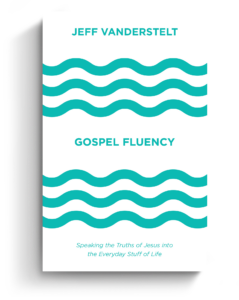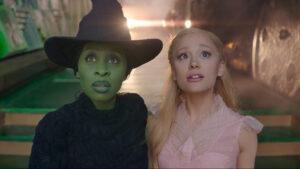One of the most famous books in all of the French language is Antoine de Saint-Exupéry’s Le Petit Prince. It’s a book illustrated for children and written for grown-ups, speaking to themes about human nature. Published in 1943, the novella is the fourth most-translated book in the world (translated into more than 250 languages and dialects) and was voted the best book of the 20th century in France.
Yet the popularity of the book is surprising to some because it remains an enigma. Its intent and morality are far from transparent. In fact, just this year Mark Osborne directed an adaptation of the book with Paramount. The film is now on Netflix and stars the voices of Hollywood stars like Jeff Bridges, Rachel McAdams, Ricky Gervais, James Franco, and Benicio Del Toro.
Book Compared to Film
The original story concerns a downed airman who meets a young boy who claims to be from a distant asteroid (B-612). And if you’ve read it, you’re probably wondering how the original could be turned into a feature-length film.

So Osborne reconstructed its frame. Osborne’s Little Prince begins with a young girl prompted and groomed by her mother to enter an elite school (aptly named Werth Academy). Osborne paints the world of grown-ups as dark, predictable, and boring. They’re all slowly coaching her to be like them. The Little Girl’s every hour is planned for her as her mother develops her “life plan,” which, according to her mother, allows “room for a friend in two years for about 30 minutes, from 1:00–1:30.”
The twist comes when they move into a house next to a strange old man and former aviator (Jeff Bridges). They attempt to avoid him, but the little girl ends up being enamored by his unpredictable and imaginative ways. They develop a friendship, and the old man shares with her the story of his encounter with The Little Prince. I could say more, but I’ll refrain from spoilers.
Three Themes
The movie has many strengths. The voices are well casted, the score is celestial and full of wonder, and the stop-motion works seamlessly, especially for the aviator’s memories of The Little Prince. At the same time, the film’s not without its flaws. It’s too long for a children’s movie, has a few dead spots, and the climax seems a little out of joint with the character of the rest of the film.
While the best way to enter the story is to go watch or read it for yourself, I’d recommend paying attention to three themes.
1. Cultivate imagination, creativity, and wonder.
Perhaps the clearest theme of The Little Prince is an encouragement to cultivate imagination, creativity, and wonder. Osborne communicates this point not only through the plot but also the imagery. He juxtaposes the “adult life” with the life of the aviator and children, accentuating his point with vibrant colors for the lives of the latter and dark, dim ones for the lives of the former. The fence between the houses was both literal and metaphorical, and the little girl had to fall to the other side for her imagination to be cultivated.
The story also offers moments of allegory; in fact, some argue the entire narrative is an allegory. For example, when the Little Prince is on his way to earth, he meets myriad characters, all of them portraits of the consuming and hindering effects of hubris. He meets a king who claims to rule over all with absolute power; he exercises his power over the sun by ordering it to set . . . . but only at sunset. The Little Prince is not fooled, for he sees the king’s “power” is no more than a farce. He’s trying to make himself seem important, but his significance is a vapor.
And the Little Prince sees straight through the shroud. The characters on their planets are blinded by their thirst for power, money, adulation, but the prince is filled with wonder and imagination. In other words, he can more truly see, because he hasn’t been blinded by what’s visible only to the eyes.
2. Press into mystery.
While I agree there is an overall metanarrative to the movie, it remains a story filled with mystery, which I suppose has contributed to its appeal over the years. Saint-Exupéry wrote his story with enough details and coherence to carry it along, but he also left some things up for interpretation. He didn’t fill in all the holes or overpreach his point. Instead, he let our imaginations carry us through reflection and contemplation.
Many of us, especially those who were brought up in Christian environments, have been taught that art, writing, and communication ought to tell the truth and tell it straight. Don’t be vague; be direct. We like to explain things. We reason, rationalize, argue, hypothesize, and connect dots. This is something natural to humans in every age, since our mind desires to make things fit.
But the mind is really stretched when the dots are not already connected for us; when there remains a sense of mystery, of the unexplainable. It’s then our minds start working. The Little Prince—both the novella and its adaption—urges us to press into mystery, not turn away from it.
3. See what really matters.
The final theme is a reminder to focus on what really matters. The story’s essence is controlled in the lines uttered by a fox to the Little Prince: “One sees clearly only with the heart. What is essential is invisible to the eyes.” Most of the adults in the movie occupy themselves with things of little value. They spend their time only on what they think is important, all the while forgetting what really matters: the relationships we have.
The Little Prince’s relationship with the rose is meaningful because he cares for it and takes responsibility for it. Meanwhile, the adults develop an endless cycle of working for that which they think is valuable, while missing what is truly valuable all along. Meaning emerges from the relationships we form, but to realize this point we must see with the heart rather than the eyes.
Ideas through Images
The challenge of an article is summarizing the film’s themes in a way that doesn’t downplay the mystery, the narrative, and the art. After all, the power of the point comes in the telling, not the summarizing. So, to really “get the point” as Osborne and Saint-Exupéry want you to, you must see and read the story.
Neil Postman argued that because of television, Americans no longer exchange ideas; they exchange images. But maybe this is a false dichotomy. Osborne’s The Little Prince exchanges old ideas through images—and I, for one, am glad Osborne decided to introduce this story to a new generation.
“The Most Practical and Engaging Book on Christian Living Apart from the Bible”
 “If you’re going to read just one book on Christian living and how the gospel can be applied in your life, let this be your book.”—Elisa dos Santos, Amazon reviewer.
“If you’re going to read just one book on Christian living and how the gospel can be applied in your life, let this be your book.”—Elisa dos Santos, Amazon reviewer.
In this book, seasoned church planter Jeff Vanderstelt argues that you need to become “gospel fluent”—to think about your life through the truth of the gospel and rehearse it to yourself and others.
We’re delighted to offer the Gospel Fluency: Speaking the Truths of Jesus into the Everyday Stuff of Life ebook (Crossway) to you for FREE today. Click this link to get instant access to a resource that will help you apply the gospel more confidently to every area of your life.

































